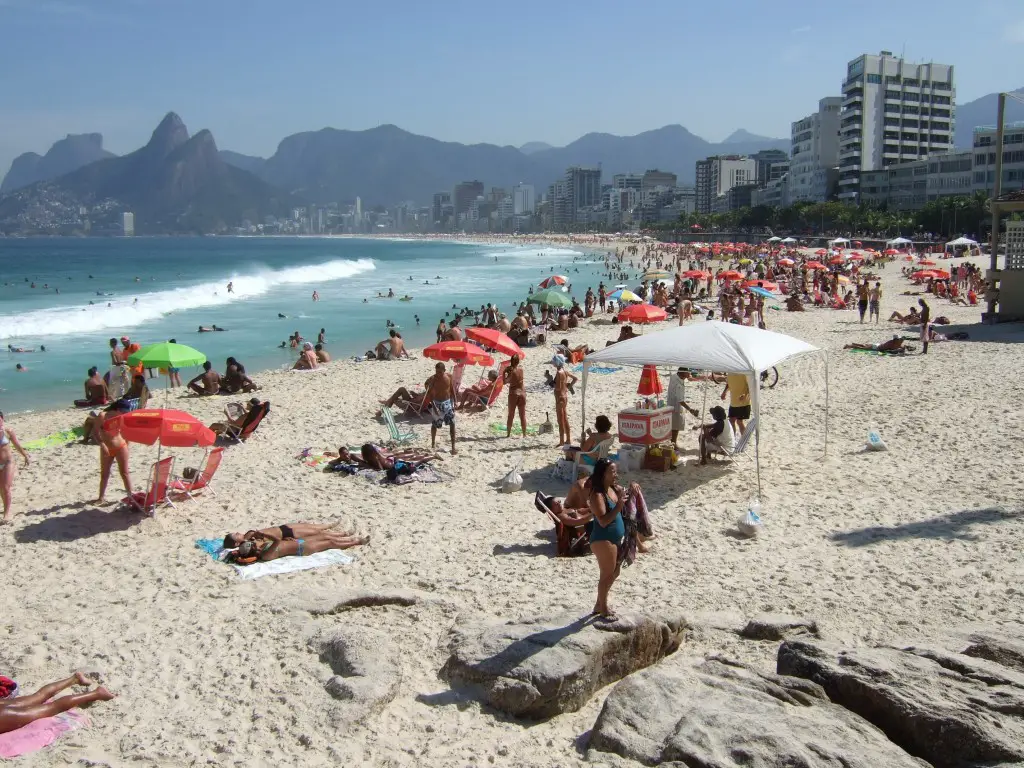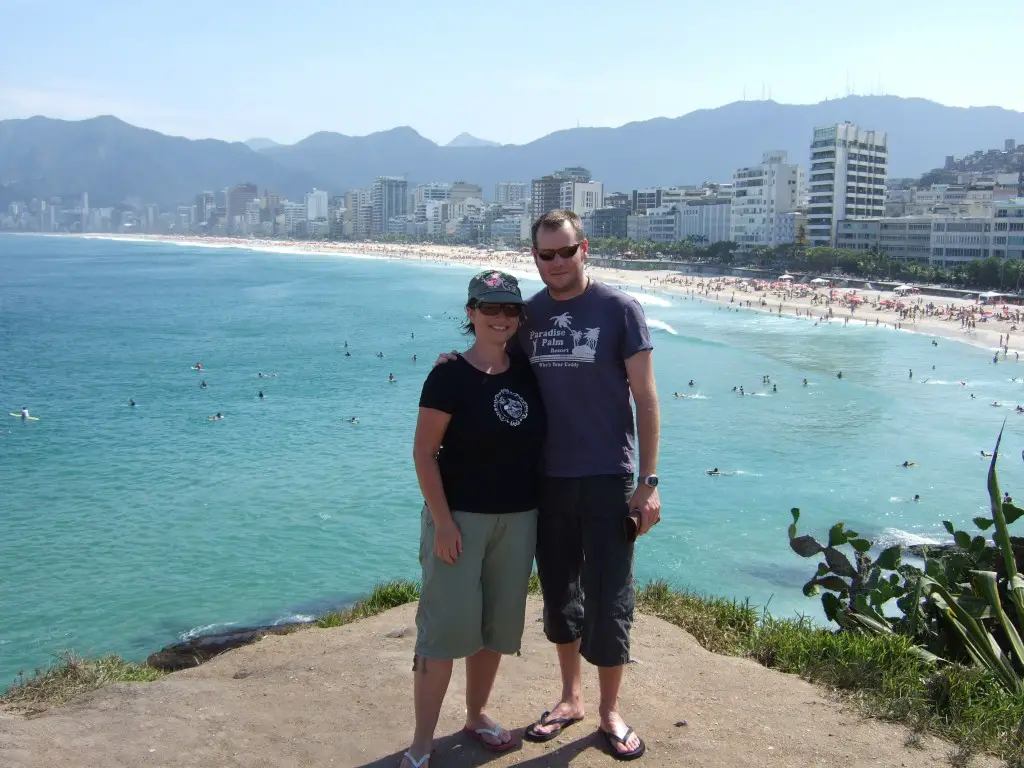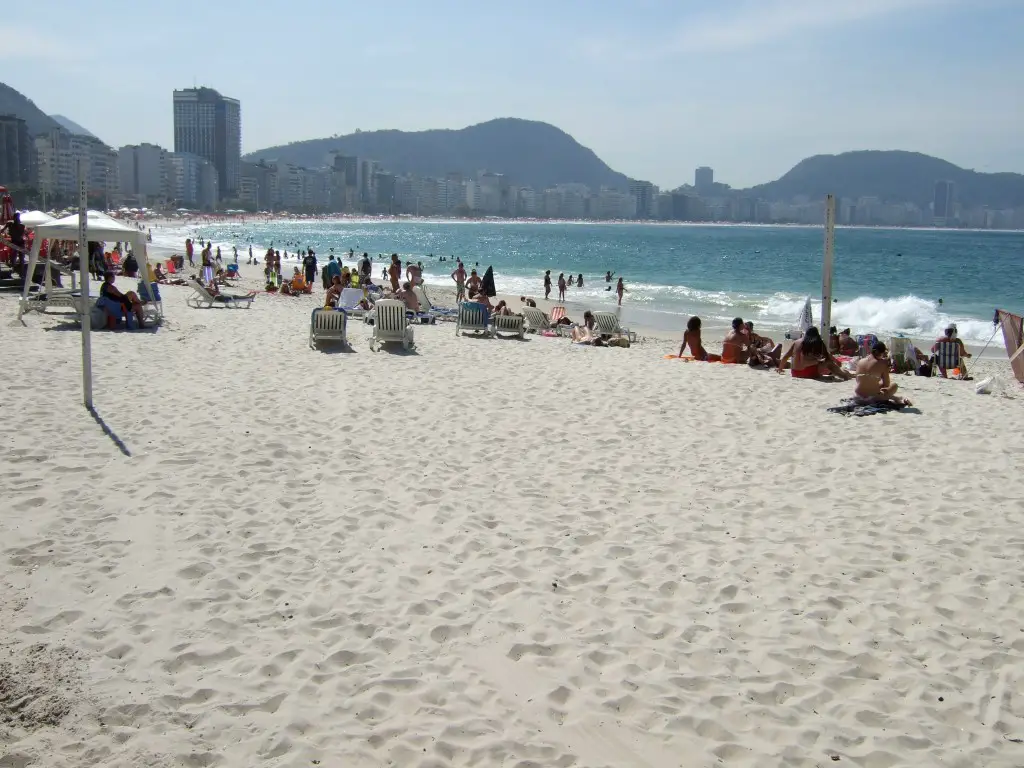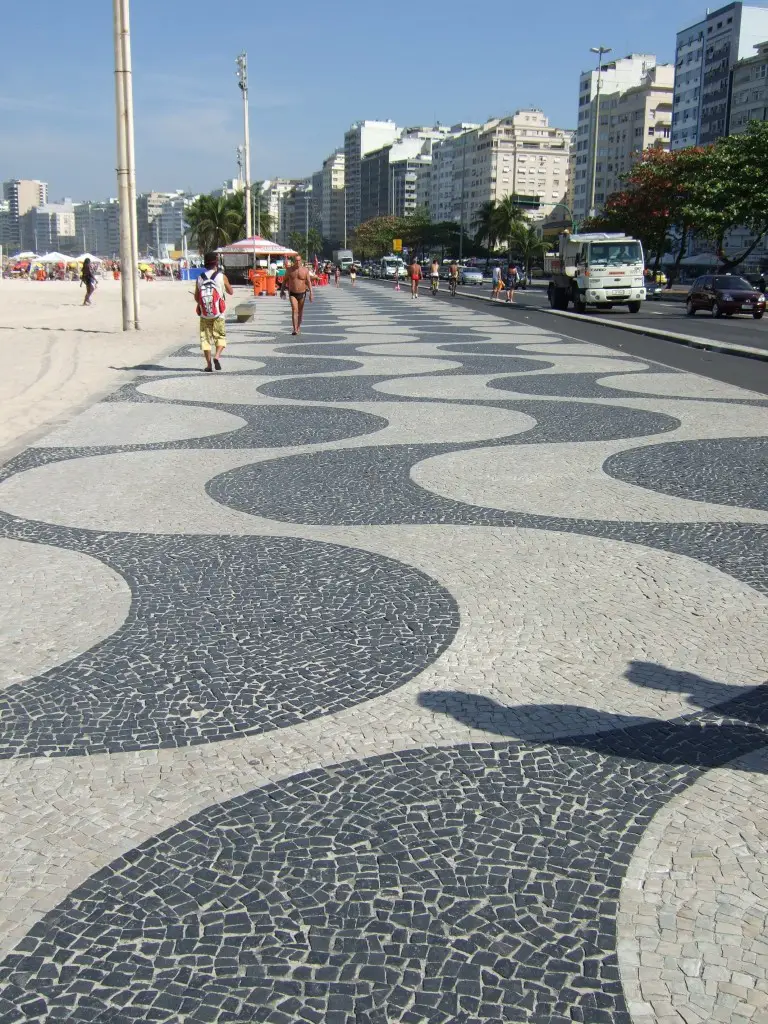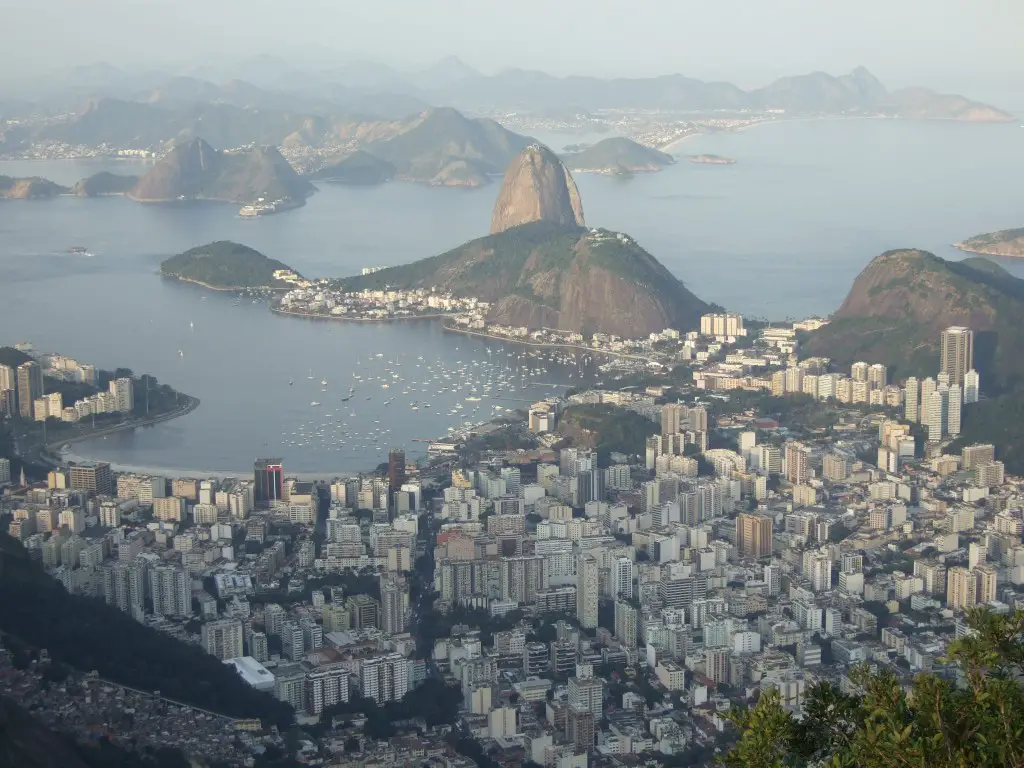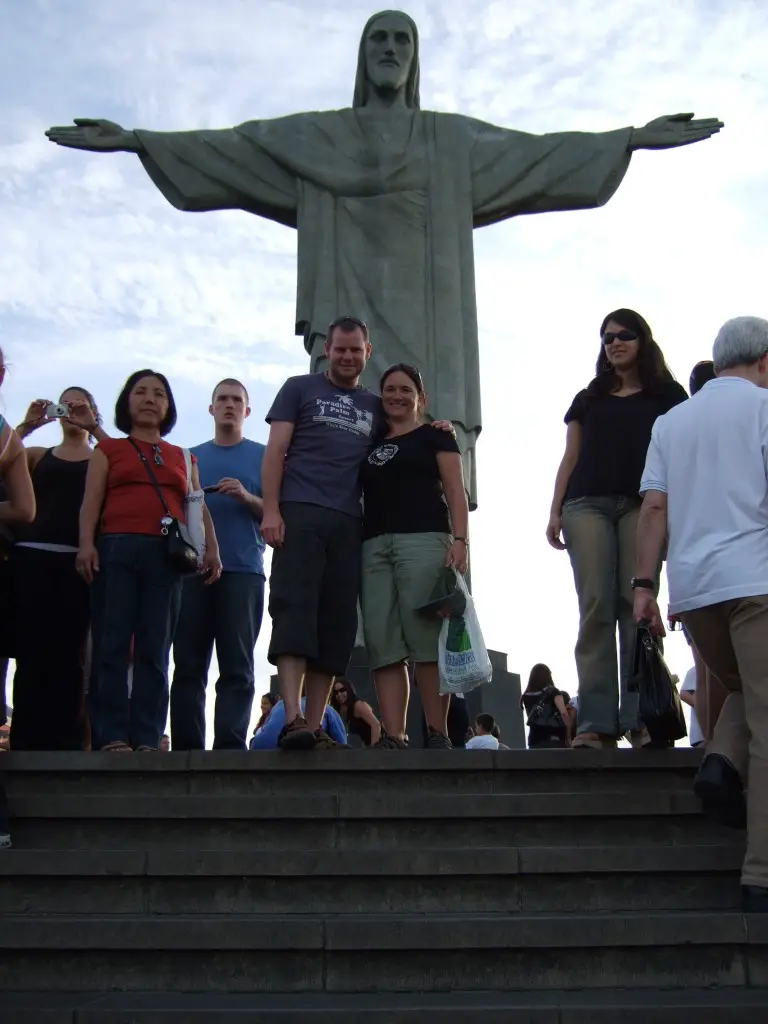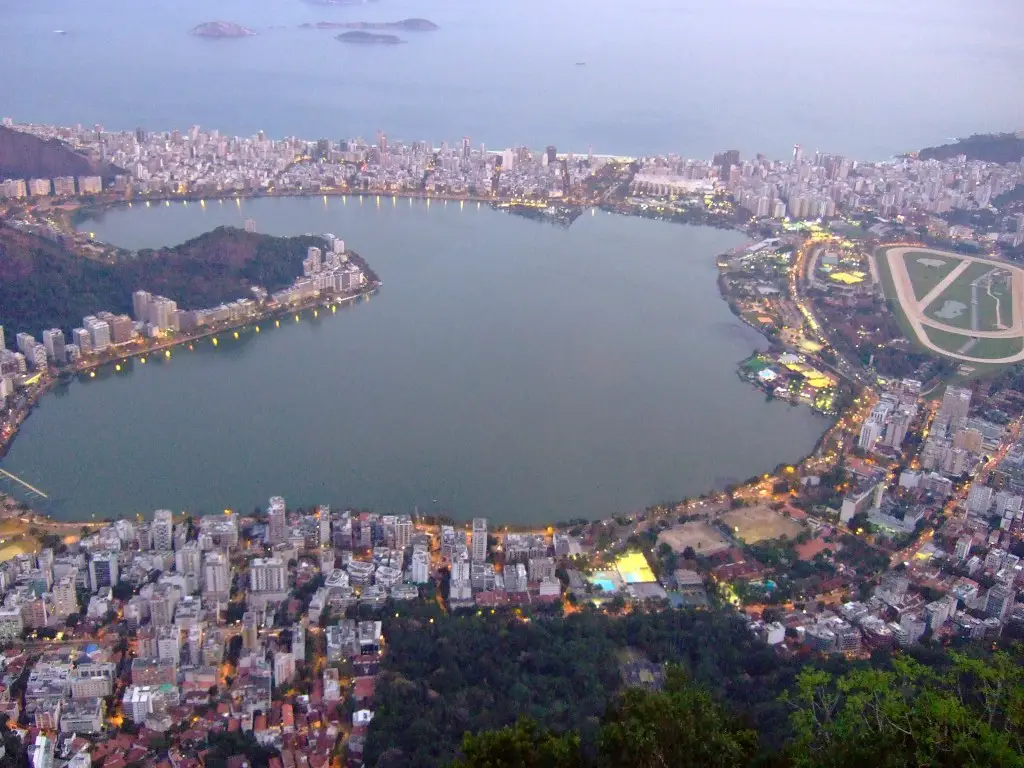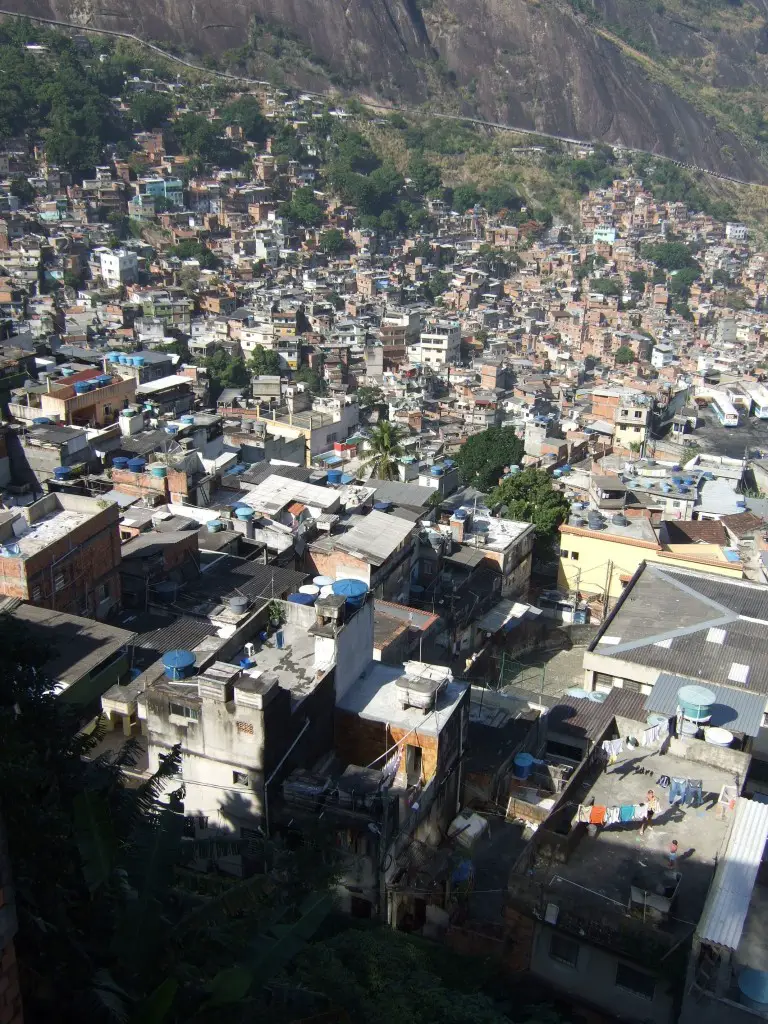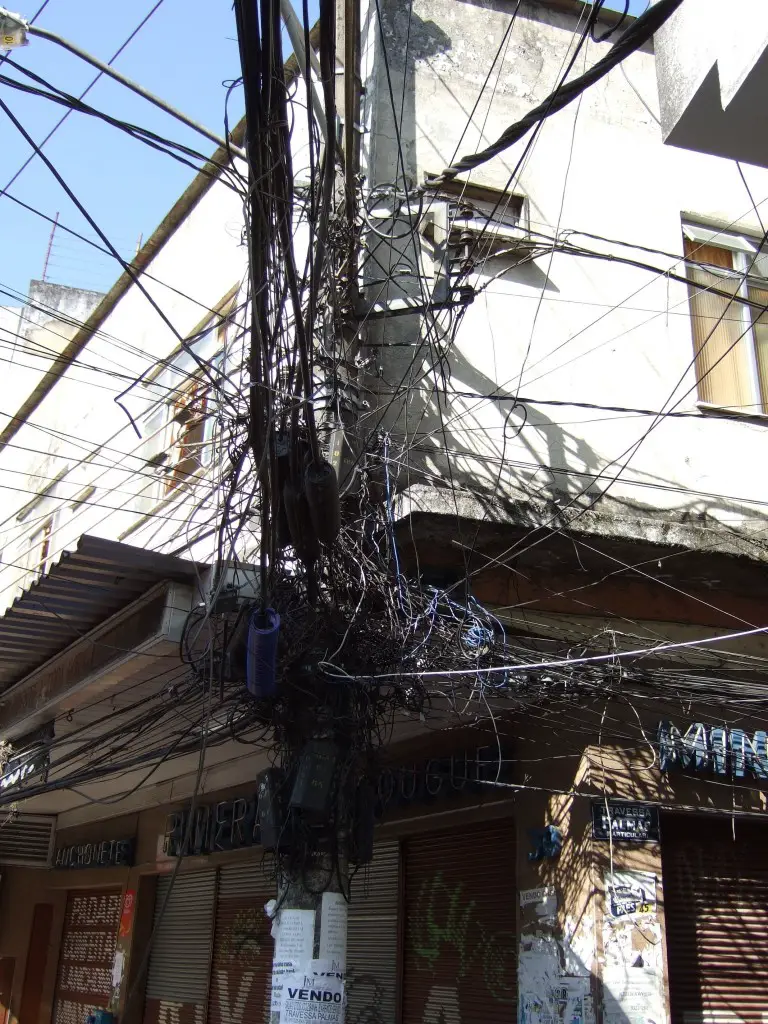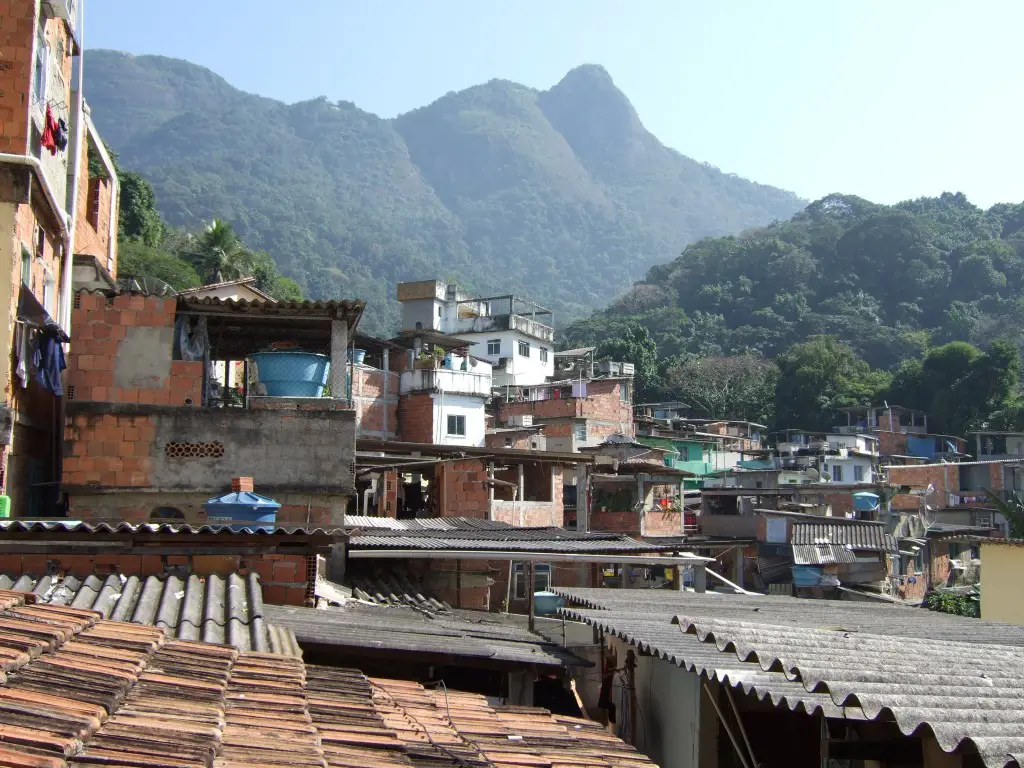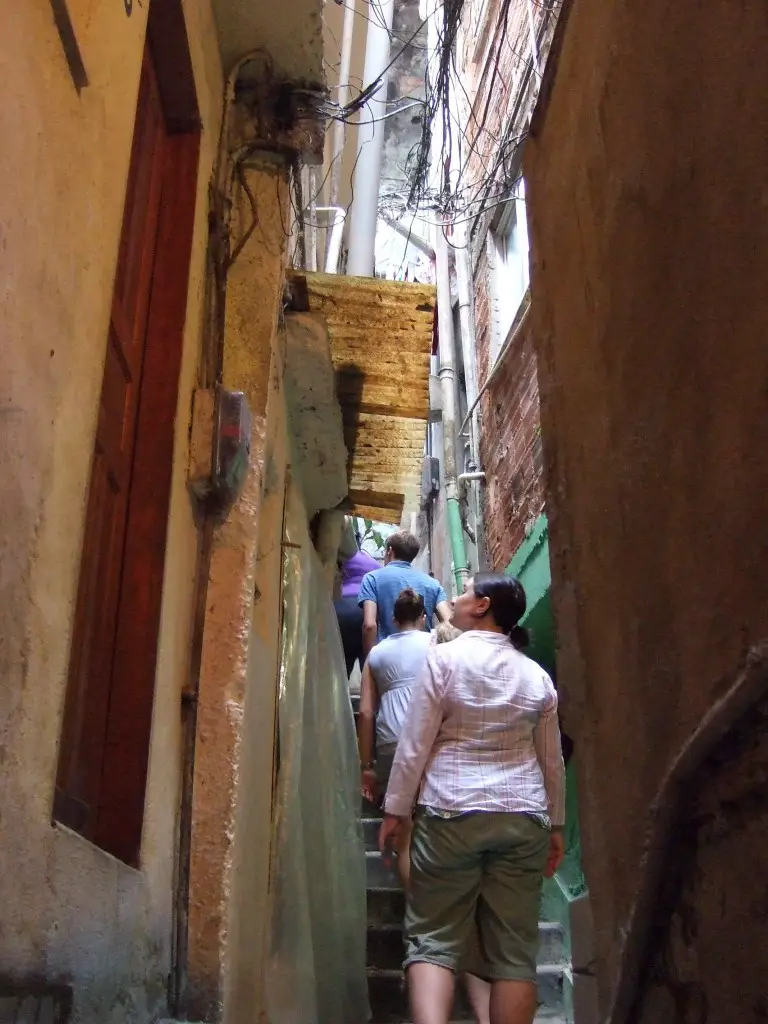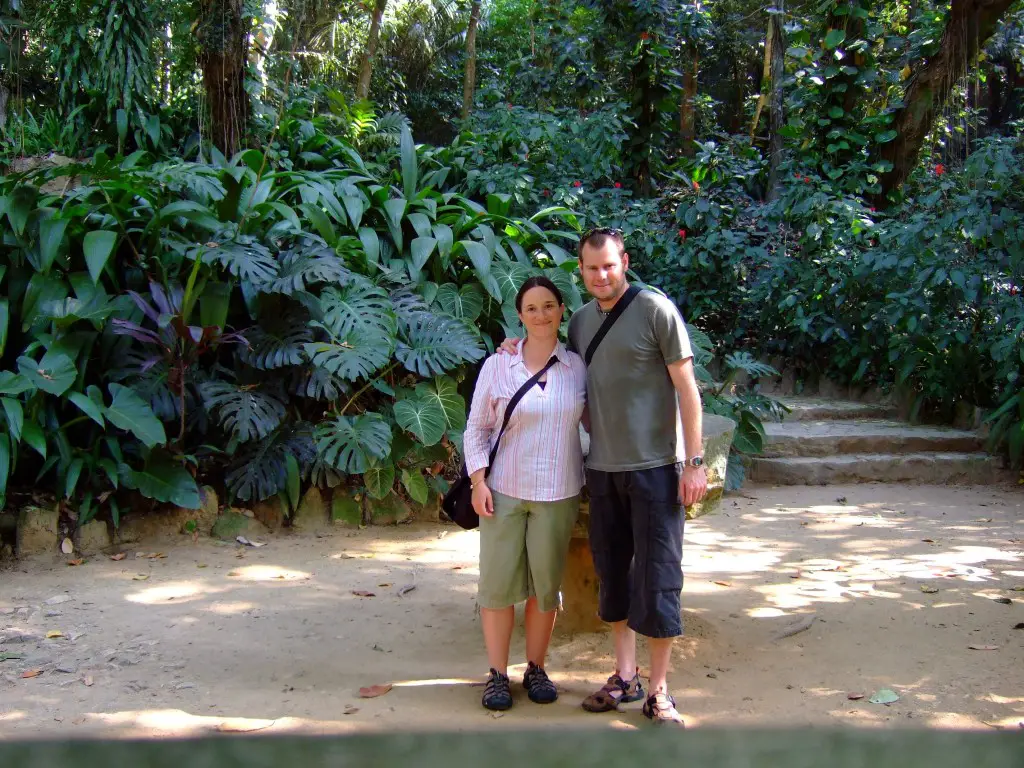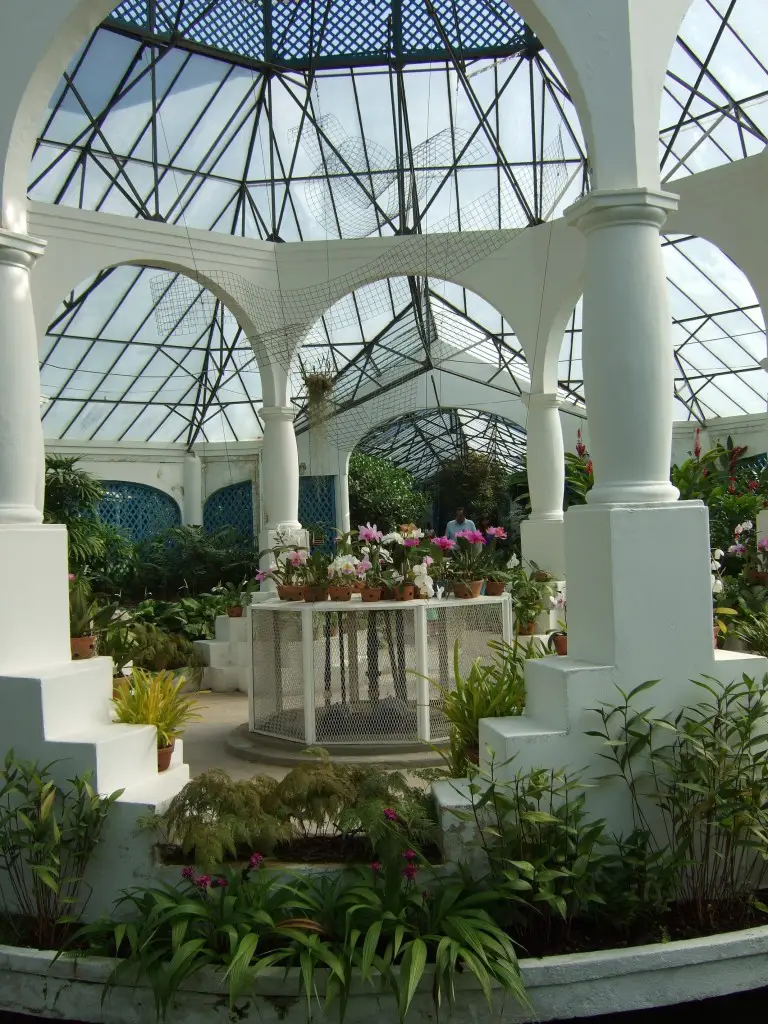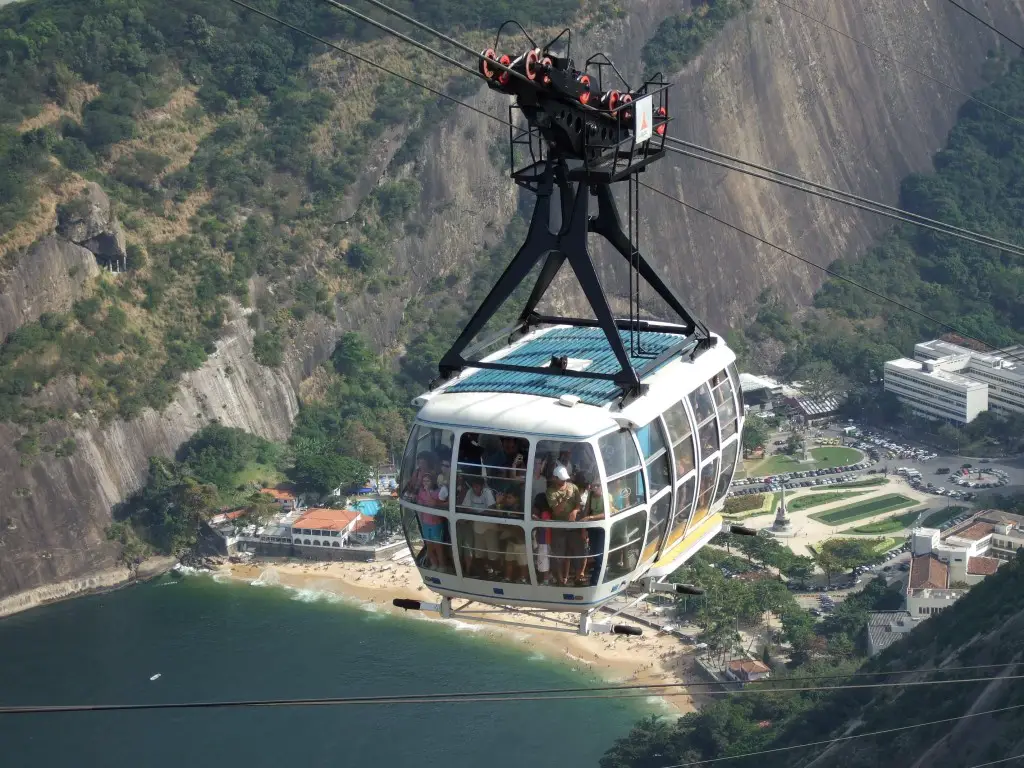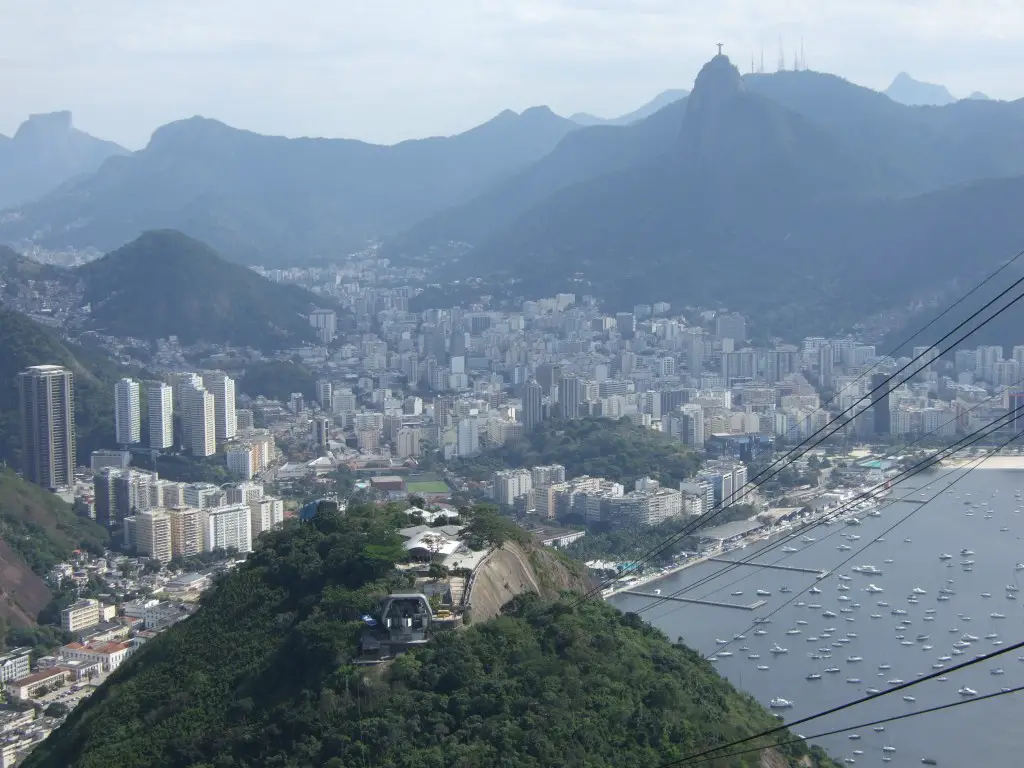We arrived in Rio from Salvador after a very pleasant Gol airways experience. The Brazilian budget airline came through with the goods with a) a cheap fare, b) two rounds of drinks, a tasty banana bar and a packet of delicious peanuts during the two hours in the air, c) a cheap fare, and d) taking off and landing the right way up. Couldn’t have been happier.
Rio airport was a snapshot from one of the more embarrassing phases of 70’s architecture, though the fact that you had to have a receipt for your luggage meant that no-one could nick your bag off the carousel and run through customs with it. So we forgave the surroundings. Plus there was a counter to pay for a fixed price taxi prior to going through customs and entering the throng (not “thong”) of taxi drivers waiting on the other side. Taking the fixed price option (rather than chancing it on the bus) reminded us once again of our “flash packer” status, but so be it.
Right from the moment we left the airport, Rio had a more polished feeling than we had experienced in Savador. Rio’s streets were absent of potholes, the pavements were flat (allowing for carefree walking), and the buildings were more of the 70’s glam we had experienced at the airport. Rio, the stylish home of bossa nova and the genius of Sergio Mendez.
Though there were still signs everywhere that it wasn’t all glam – the favellas or slum areas were littered throughout the city (there are about 60 favellas in total in Rio).
We are staying in (“The Girl from”) Ipanema, in a place called the Mango Tree. We’re a block back from the beach, on which I (Mike) have struggled to fit in as a local thanks to my slightly pasty complexion and embarrassing lack of Portuguese. Ky has already been told that she could easily pass as a Brazilian….
The hostel is very nice, and the location is great. It’s full of backpackers (as you may expect), so it’s a real reminder that we have arrived on the backpack trail – Salvador seems to have been a little way off the normal backpacker route. Ipanema is a middle class suburb with apartment buildings and shops everywhere. All the apartment buildings have big gates and security, though during the day it’s quite safe to walk around the streets.
We spent day 1 walking along Ipanema beach and around to “Copa” Copacabana, humming all the way. It’s winter here, but the temperatures are in the early 30’s, so both beaches (which are very large) were packed with sunbathers and surfers.
That afternoon we caught a bus (plus a train up the mountain) to see Christ the Redeemer, who manages to keep a watchfull eye over pretty much most of the city, The statue itself is very impressive, and the views are fantastic – covering Ipanema, Copacabana, Sugar Loaf, the city (Centro) the sea, the harbour, the Maracana etc
The buses, by the way, we had figured out were pretty good – about 2 NZD to go across the city (or 50 metres up the road if you so desired), so we used these the whole time we were in the city.
Next morning we went on a Favella tour that promised not to be voyeuristic, though the intention was in all honesty to go and stare at where a huge chunk of Rio’s population live. Still, it was a very interesting experience. Our guide was very good. She worked for an NGO that aims to develop infrastructure (water, electricity) and education within the favellas, and the tours serve two purposes – raising money for the NGO and breaking down misconceptions about the people in the Favellas.
The Favellas (or shanty towns) sit outside of state control, beng run by the drugloards (3 separate drugoads control all the Favellas in Rio, with the odd war between them). The inhabitants get to vote, but apart from that they pay no taxes, they get no state benefts (as they have never had a tax paying job they can’t be unemployed), there are no state housing regulations to meet, and the water and power is all done by the favella inhabitants.
The crime rate inside the favellas (excluding the drug deals…) is almost non-existent. The drugloards want the drug users (mostly from Rio’s middle class – the only ones that can afford the drugs) to feel comfortable coming into the Favella to buy, so they crack (pun intended) down of all theft and violence (often killing the offender). “Everything is upside down” our guide kept saying. The police have no influence whatsoever. There was even one case of two off duty police officers trying to rob a bank in the favella, only to be stopped by the drugloards!
The reality is that most of the people in the favella are hard working, with jobs (cleaning, security, driving etc) in the community. All the houses are built with the same foundations as a 50 story building, because many of the inhabitants work on the major construction sites in the city. Likewise, the electricity is done by those that keep the lights on in the posh apartments.
Education is a major problem, with 25% illiteracy rate in the country (unable to write their name), the rate is higher in the favellas. And it’s more important for kids to earn money for the family now than to work towards a better future. Though some favellas are trying hard to change. One we went to (thanks to the help from our guide’s NGO) had a good school and even had street names – making it easier to do simple things like apply for jobs.
So a really interesting, sobering look at the other side of Rio…
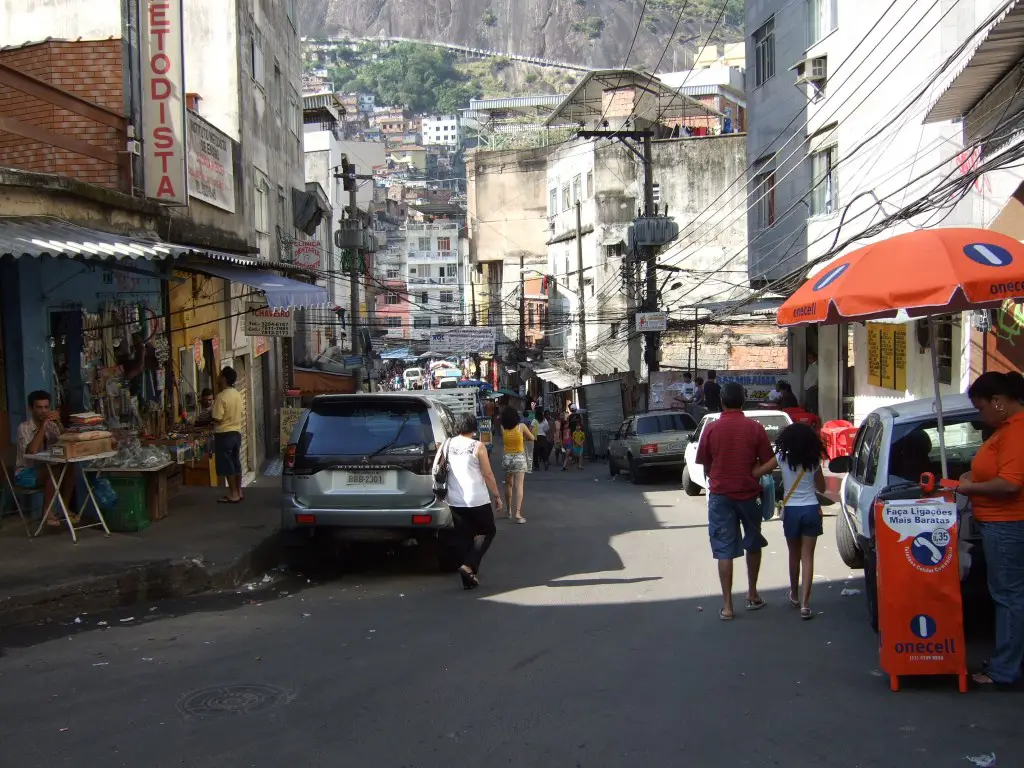
Downtown Recina – they have internet cafes, banks, supermarkets and until recently a McDonalds! But then there was an inter-favella war and Ronald and his mates got a bit scared so shut up shop (wimps!)
Most of the favella only have one main road and the houses are all interconnected via tiny little alleyways.
That afternoon we headed to the Botanic Gardens – interesting and relaxing, and lots of flowers that Kylie could identify (and that we took pictures of even if we didn’t know what they were).
We also headed up Sugar Loaf, for some more panoramic views of the city.

